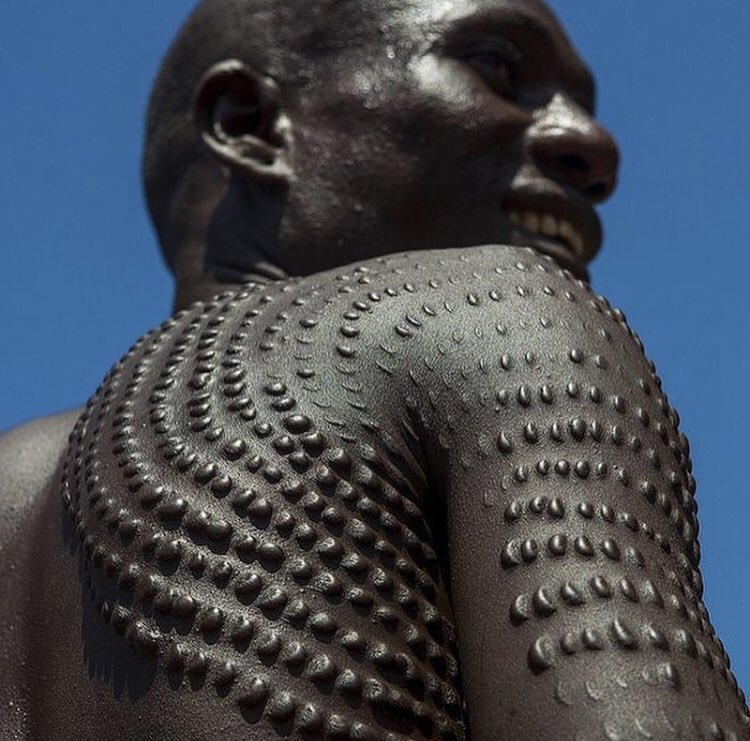
African Scarification Dots– Karo Tribe in Ethiopia
By Akinbola Esther
Karo Tribe is a small tribe with an estimated population between 1,000 and 3,000. They can be found along e east banks of the Omo River in southern Ethiopia and practice flood retreat cultivation; this is because of the tsetse flies.
These flies are large and consume the blood of vertebrate animals. They cultivate sorghum, maize and beans and rear small cattle.
Like many of the tribes in the Omo, they paint their bodies and faces with white chalk to prepare for a ceremony. The chalk is mixed with yellow rock, red iron ore and charcoal to make its color. Face masks are worn at times and they have clay hair buns with feathers in them. Red clay mixed with butter is put into their hair and clothing is made from animal skin.

In the Karo Tribe, both men and women purposely scar their bodies.
The men scar their chests to represent killing enemies. They also wear clay hair buns which symbol a kill. A man in the tribe can have as many wives as he wants, but must be able to afford them. Most men will only marry two or three.

The women scar their torsos and chest because it is considered beautiful and sexually desirable. They make use of stones to gauge their skins, leaving deep, discoloured scars in the Menit tribe.


